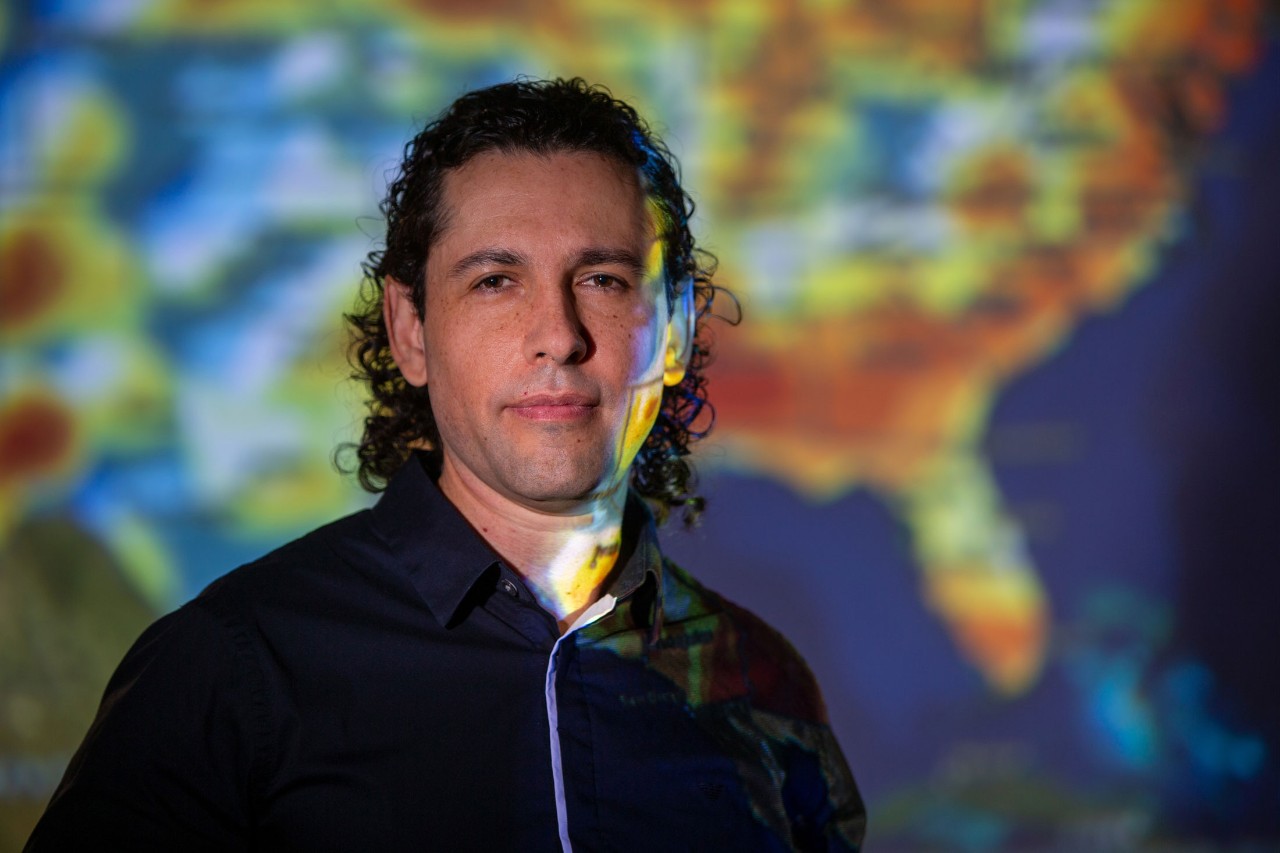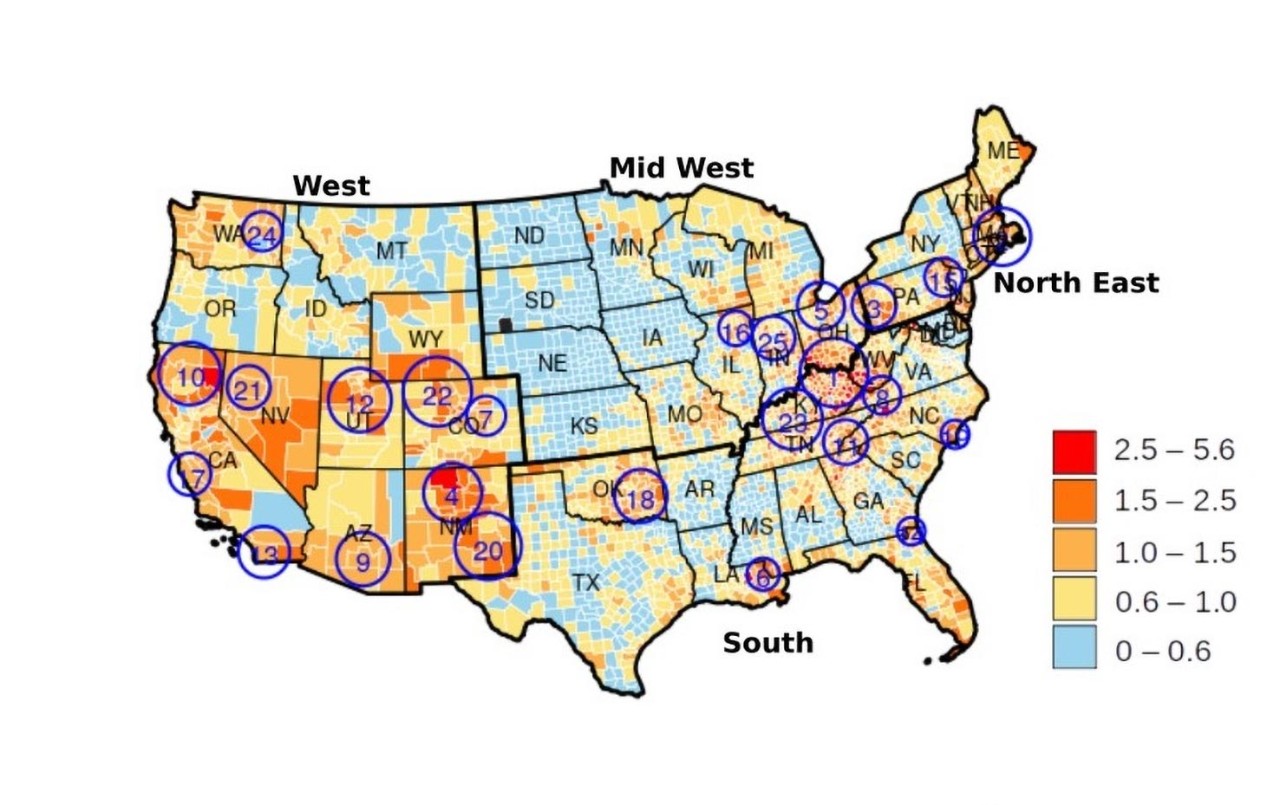The opioid epidemic is taking a deadly toll on people in disproportionate clusters, according to a new national study by the University of Cincinnati.
Fatal opiate overdoses are most prevalent among six states: Ohio, Pennsylvania, Kentucky, West Virginia, Indiana and Tennessee. But researchers identified 25 hot spots of fatal opioid overdoses nationwide using data from the Centers for Disease Control and Prevention.
Published today in the journal PLOS One, the study demonstrates how both widespread and localized the problem of substance use disorders can be, UC assistant professor and co-author Diego Cuadros said.
Cuadros is director of UC's Health Geography and Disease Modeling Laboratory, which applies geographical information, perspectives and methods to the study of health, disease and health care. As an epidemiologist, he studies the impacts of diseases such as malaria, HIV and COVID-19.
"Not everyone is similarly at risk," Cuadros said. "We wanted to identify characteristics that put people at higher risk of a fatal overdose."

Epidemiologist Diego Cuadros is director of UC's Health Geography and Disease Modeling Lab where he has studied HIV, malaria and COVID-19. Photo/Andrew Higley/UC Creative + Brand
Health interventions for opiates have focused largely on treatments such as the distribution of naloxone and other lifesaving remedies. But Cuadros said prevention could be effective if vulnerable populations can be identified. To that end, researchers found that white males ages 25 to 29 were most at risk of fatal opioid overdose followed by white males ages 30 to 34. The study also identified an increasing risk to black males ages 30 to 34.
The study also found a correlation between fatal overdoses and mental and physical distress using surveys of physically and mentally unhealthy days. Mental distress increases the relative risk of dying from a drug overdose by as much as 39%.
"We saw a strong association with mental health and substance abuse disorders, particularly opiates," Cuadros said. "What's happening now is we're more than a year into a pandemic. Mental health has deteriorated for the entire population, which means we'll see a surge in opiate overdoses."
Researchers are trying to understand why men are more likely than women to suffer a fatal overdose and what it is about the period of life between age 30 and 45 that makes people more susceptible to the epidemic.
"Maybe you have more responsibilities, financial responsibilities or stress at that time. Maybe there are physiological changes or changes in our brain that we don't know yet," Cuadros said.
"This is a complex epidemic. For HIV we have one virus or agent. Same with malaria. Same with COVID-19. It's a virus," Cuadros said. "But with opioids, we have several agents. At the beginning of the epidemic it was heroin. By 2010 it switched to prescription opiates."

A map of the contiguous United States shows the spatial distribution of relative risk for fatal overdoses from substance use disorder in 25 identified clusters. Graphic/UC
Now states are seeing more overdoses from synthetic opioids such as fentanyl.
The study also tracked the migration of overdoses between 2005 and 2017 from Southwest states to the Northeast. Many of the clusters UC identified in the Southwest and Northeast had comparatively higher levels of physical and mental distress.
Featured image at top: A new study by the University of Cincinnati found a link between the opioid epidemic and high rates of mental distress. Photo/Dan Meyers/Unsplash

UC assistant professor Diego Cuadros helped Ohio health officials track the spread of COVID-19. Now he and his students have identified where the opiate epidemic is wreaking havoc in the United States. Photo/Joseph Fuqua II/UC Creative + Brand






